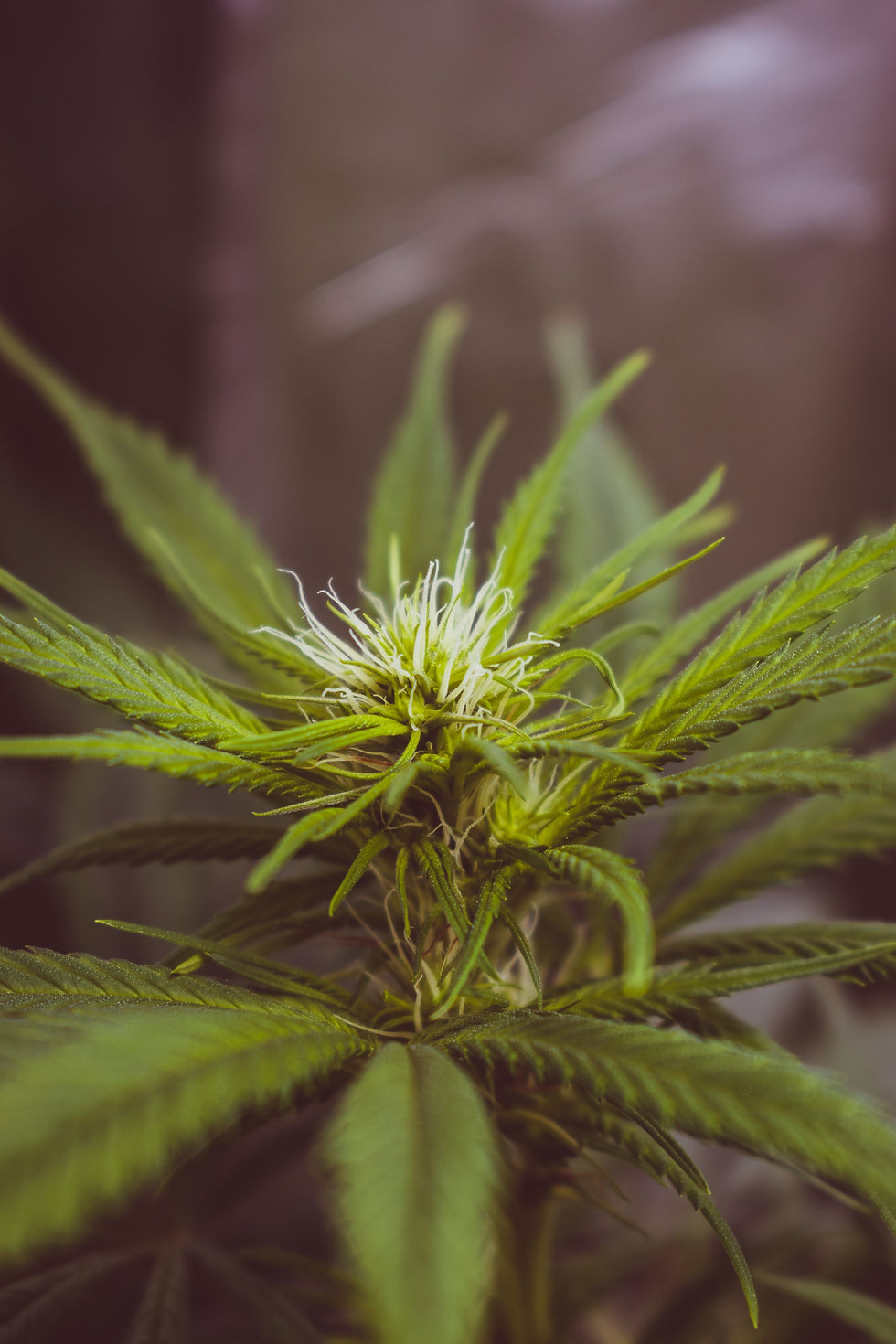Hemp 101
- Courtney Zeller
- Apr 19, 2020
- 3 min read
Updated: Mar 18, 2021

The interest and use of hemp products have grown exponentially over the past several decades as the understanding of the plant’s bioactives continues to garner attention. First thing, the difference between hemp and marijuana must be established given their relation to the Cannabis industry and legal considerations. Both hemp and marijuana come from the same cannabis plant, Cannabis sativa. Hemp, however, is defined in the 2018 Farm Bill as the cannabis plant that contains 0.3% or less THC by dry weight and marijuana is the term used for plants containing greater than 0.3% THC. THC is the compound delivering the psychotropic effects of “getting high”, while CBD is the main non-psychoactive ingredient in cannabis. THC is used medicinally as well as non-medicinally for its intoxicating effects.
While CBD is often well-tolerated, THC is associated with increased risk of adverse events. Hemp can be grown as a seed, fiber (stalks), or as a dual-purpose crop. Any cannabis plant containing more than 0.3% THC is considered non-hemp cannabis under federal law (aka, marijuana). In past decades, hemp was not differentiated from other cannabis plants that were made illegal in 1937 under the Marihuana Tax Act and the 1970 Controlled Substances Act. Hemp now falls under the jurisdiction of the Department of Agriculture, which has led to increased hemp usage in numerous industries including but not limited to textiles, furniture, personal care products, and food and beverages.
Cannabis sativa produces over 144 naturally occurring compounds known as cannabinoids, which act on the endocannabinoid system (ECS). The endocannabinoid system (ECS) is a complex cell-signaling system that supports vital functions keeping physiological regulation pathways in the body balanced. It interconnects numerous systems, organs and tissues and responds to variations in the internal and external environment. The components of the ECS include endocannabinoids, receptors and enzymes. Endocannabinoids are molecules made by the body that are similar to cannabinoids. The two key endocannabinoids that the body produces on an as needed basis include anandamide (AEA) and 2- arachidonoylglyerol (2-AG). While research has linked the ECS to numerous processes, experts have yet to determine all of its potential functions. According to researchers, “It is critical to keep in mind that the study of the endocannabinoid system should be region- and condition-specific, along with the consideration of other neurotransmission systems.”
The “entourage effect” was introduced in 1999 and is the proposed mechanism that explains how the compounds in cannabis act synergistically. Researchers suggest that “one molecule is unlikely to match the therapeutic and even industrial potential of cannabis itself as a phytochemical factory.” These compounds include cannabinoids, flavonoids, terpenes, and fatty acids that are naturally found in cannabis. For example, some terpenes share a common intermediary (geranyl diphosphate (GPP)) with the cannabinoids contributing to the entourage effect.
Full Spectrum (“whole plant”) CBD is often associated with the “entourage effect” and includes all of these naturally occurring compounds (including THC) working together for increased effectiveness. While broad spectrum sounds similar to full spectrum CBD, there are some fundamental differences. In broad spectrum, although other compounds are preserved, THC is completely removed. Broad spectrum CBD provides similar benefits to full spectrum products without any of the risks associated with THC. CBD isolate is another term defining an extract containing only CBD, but does not preserve any other cannabinoids or terpenes.
The varying effects of CBD and THC may be explained by differing mechanisms of action. This is due to their different molecular structures and how they each interact with cannabinoid receptors known as CB1/CB2. The CB1 receptors are found primarily in the brain but also in several peripheral tissues, while CB2 receptors are primarily associated with the immune system. While both CBD and THC can interact with CB2 receptors, CBD does not bond directly with the CB1 receptor and may even neutralize the effects and tolerability of THC that can bind with the CB1 receptors.
Understanding the important differences between hemp and marijuana along with associated terminology and mechanisms will contribute to an informed view by consumers and practitioners, as well as increased opportunities for farmers, CBD advocates, and entrepreneurs.



Comments